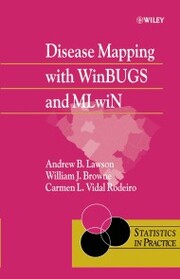Detailansicht
Disease Mapping with WinBUGS and MLwiN
eBook - Statistics in Practice
ISBN/EAN: 9780470856055
Umbreit-Nr.: 3681796
Sprache:
Englisch
Umfang: 296 S., 10.08 MB
Format in cm:
Einband:
Keine Angabe
Erschienen am 31.10.2003
Auflage: 1/2003
E-Book
Format: PDF
DRM: Adobe DRM
- Zusatztext
- Disease mapping involves the analysis of geo-referenced disease incidence data and has many applications, for example within resource allocation, cluster alarm analysis, and ecological studies. There is a real need amongst public health workers for simpler and more efficient tools for the analysis of geo-referenced disease incidence data. Bayesian and multilevel methods provide the required efficiency, and with the emergence of software packages such as WinBUGS and MLwiN are now easy to implement in practice.<ul><li>Provides an introduction to Bayesian and multilevel modelling in disease mapping.</li><li>Adopts a practical approach, with many detailed worked examples.</li><li>Includes introductory material on WinBUGS and MLwiN.</li><li>Discusses three applications in detail relative risk estimation, focused clustering, and ecological analysis.</li><li>Suitable for public health workers and epidemiologists with a sound statistical knowledge.</li><li>Supported by a Website featuring data sets and WinBUGS and MLwiN programs.</li></ul><p><i>Disease Mapping with WinBUGS and MLwiN</i> provides a practical introduction to the use of software for disease mapping for researchers, practitioners and graduate students from statistics, public health and epidemiology who analyse disease incidence data.</p>
- Autorenportrait
- Andrew B. Lawson is a professor of biostatistics and eminent scholar in the Division of Biostatistics and Epidemiology in the College of Medicine at the Medical University of South Carolina. He is an ASA fellow and an advisor in disease mapping and risk assessment for the World Health Organization. Dr. Lawson has published over 100 journal papers and eight books and is the founding editor of Spatial and Spatio-temporal Epidemiology. He received a PhD in spatial statistics from the University of St. Andrews. His research interests include the analysis of clustered disease maps, spatial and spatio-temporal disease surveillance, nutritional measurement error, and Bayesian latent variable and SEM modeling.
